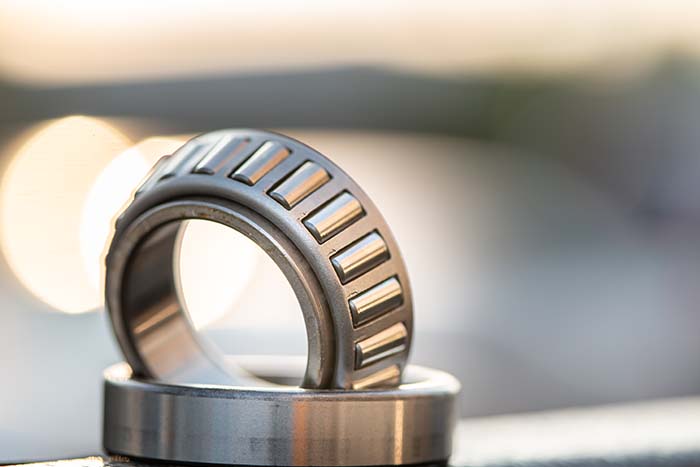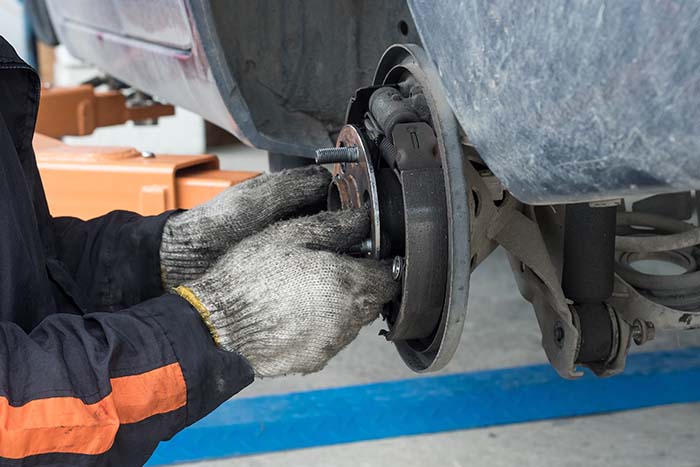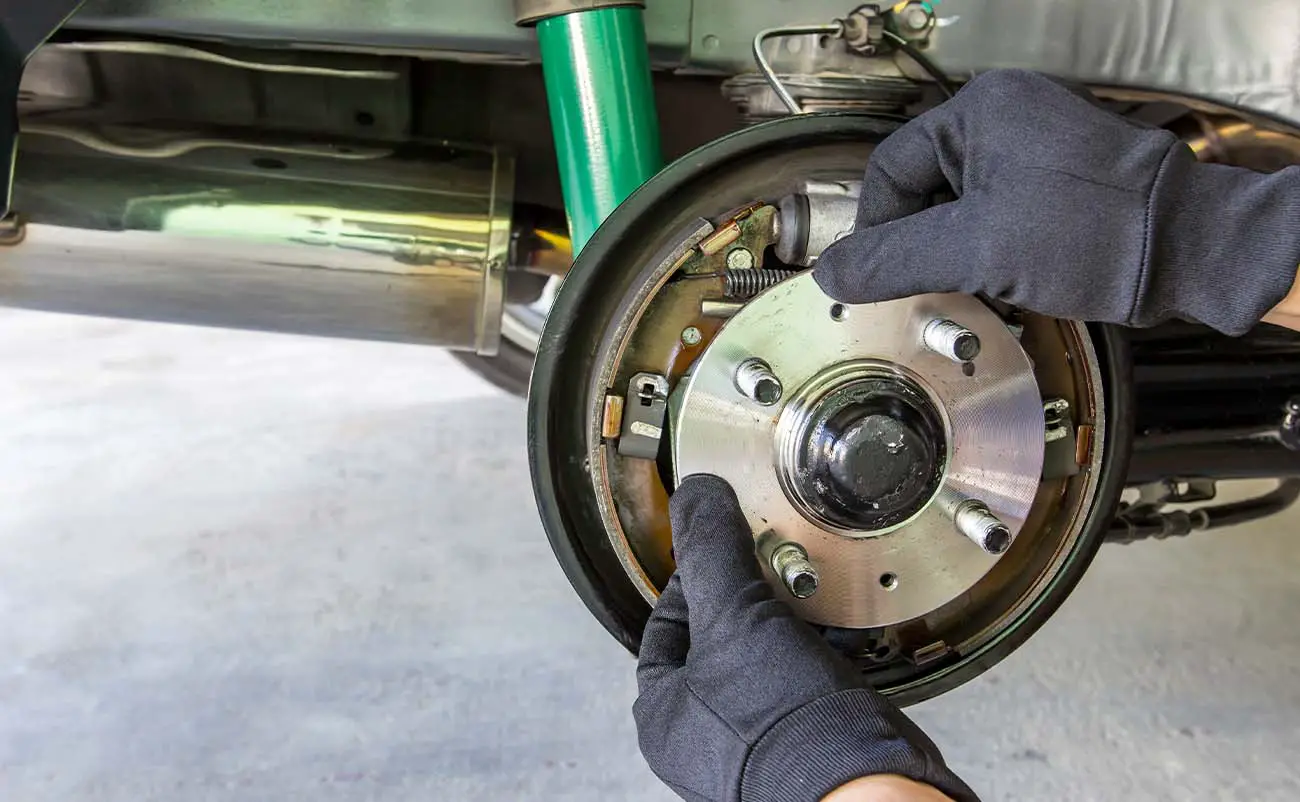A wheel bearing helps your wheels spin along the axle of your vehicle with very little friction. These bearings are designed to operate so that your wheel spins freely and effortlessly as your car drives down the road. But what happens when they fail? You might notice a grinding noise, or your wheel could even stop spinning altogether. At that point, you will probably want to know how much it costs to replace a wheel bearing. We will give you all the details about wheel bearing replacement costs and give you some more information about what wheel bearings are and how they work.
Table of Contents
Wheel Bearing Replacement Cost
The average cost to replace a wheel bearing is around $400 on most cars for both sides. The cost of parts for the wheel bearing usually runs about $150 to $200, while labor costs add another $200 to the job. Since the job requires removing the wheel and entire hub assembly, it takes an experienced mechanic a couple of hours to complete the job. In addition, some specialized tools are required to complete the task. If you decide to tackle the job yourself to save money on repair costs, then keep reading. Toward the end of this article, we will discuss how to replace a wheel bearing on your own.
The specific make and model of your vehicle will also significantly affect the cost of the job. Higher-end cars will require more expensive parts and usually more labor to complete the job, leading to a higher price tag. While you might be able to get a wheel bearing replaced in an old Toyota for $300, it might cost you $800 to replace a similar part in your newer Mercedes. In addition, some vehicles are equipped with a rear hub assembly that contains the bearing. In these situations, the whole assembly must be replaced, which might set you back $600 to $800. There are also different types of wheel bearings, and some are more expensive than others. We will discuss each type in more detail in a later section of this article.
What Is A Wheel Bearing?
 Perhaps you are wondering exactly what a wheel bearing is. A wheel bearing is a set of steel balls or rollers inside a metal ring. This ring casing is circular in shape and has a hole in the middle. This is where your car’s axle fits. The wheel bearing sits on the axle, and the wheel hub assembly is attached to it. The bearing allows the wheel hub, and thus the wheel and tire, to spin with minimal friction on the axle.
Perhaps you are wondering exactly what a wheel bearing is. A wheel bearing is a set of steel balls or rollers inside a metal ring. This ring casing is circular in shape and has a hole in the middle. This is where your car’s axle fits. The wheel bearing sits on the axle, and the wheel hub assembly is attached to it. The bearing allows the wheel hub, and thus the wheel and tire, to spin with minimal friction on the axle.
A bad wheel bearing will start to experience an increase in friction. You might even begin to hear grinding or other weird noises as a bearing starts to fail. When a bearing is no longer doing its job of reducing friction, you will be able to tell quickly. This is when it becomes imperative to get the bearing replaced. Increased friction also leads to an increase in heat. This will also damage other parts of your vehicle, including the brake rotors and brake fluid.
Types Of Wheel Bearings
There are several different types of wheel bearings that you will find on vehicles. As technology has progressed, car manufacturers have found better ways to make wheel bearings, and these improvements have led to new types of wheel bearings that perform even better than the older ones. Here are the most common types of wheel bearings that you will encounter.
— Ball Bearings
This type of bearing is probably the most common type that you will find. It is used in everything from automobiles to roller skates. It simply includes a series of steel balls inside the bearing that help the bearing spin. These bearings are pretty versatile, and they can handle both radial loads and cornering reasonably well.
— Precision Ball Bearings
These bearings use the same concept as standard ball bearings. However, the balls inside the bearings are manufactured with even more precision, and their rotation speed is much higher. This allows them to reduce friction than standard ball bearings significantly, and lower friction leads to an even lower heat generation.
Since these bearings generate less heat, they can endure more load and have better cornering ability. Because of this, they are often used in performance applications like racing cars. Under normal driving conditions, precision ball bearings are not usually a requirement. Depending on your car make and car model, it might come equipped with precision ball bearings.
— Roller Bearings
Instead of steel balls, roller bearings use a set of steel rollers inside the metal ring. These rollers are similar to tiny little logs that roll as the bearing spins. Due to the shape of these bearings, they are unable to handle cornering loads successfully. For this reason, you will rarely find them in-vehicle applications. They are most often used in very low-speed applications with minimal cornering load. This might include industrial applications like hand trucks or other equipment with wheels that move primarily straight.
— Tapered Roller Bearings
Tapered roller bearings attempt to combine the best of both worlds. Since they are roller bearings, they can bear a heavy radial load. In addition, the bearings themselves are tapered instead of flat. The rollers are shaped like small cones instead of logs, increasing their ability to handle cornering loads. For these reasons, you will see these used in automotive applications more often than standard roller bearings.
Signs Of A Bad Wheel Bearing
So, how do you know when you have a wheel bearing that is going bad? There are a few lousy wheel bearing symptoms that you should watch out for. If you notice any of these, you should take your car as soon as possible to a repair shop for a diagnosis.
— Steering Wheel Vibration
When your bearings are working correctly, they are incredibly smooth. When one starts to fail, it will begin to have increased friction. This increase in friction might start to show up as vibrations in your steering wheel, especially if a front wheel bearing is bad. The slightest amount of friction can be transferred through your steering knuckle to the steering wheel as your wheels turn. Rear-wheel bearings can go bad as well, but they often show up with other symptoms.
— Uneven Tire Wear
A lousy bearing often leads to uneven tire wire, similar to a bad wheel alignment. While a bad alignment will generally lead to uneven wear on multiple tires, a single tire that is wearing more quickly than the others could signal a bad wheel bearing. It might also point to a bad ball joint, but a mechanic can tell you precisely what the problem is.
— Excessive Wobble In Wheels
The bearing should fit very tightly inside the wheel bearing assembly. This means that it should roll as intended, but it should not wobble from side to side. This is a test that many auto repair shops will perform to determine whether you have a bad bearing. With the wheel lifted off the ground, you can attempt to shake the wheel side to side and front to back. If there is excess play or movement there, then you probably have a bad bearing.
— Car Pulls To One Side
If your vehicle pulls to one side as you drive, then you might need new wheel bearings. While it could be a simple misalignment, you might have bigger problems like a bad hub bearing or wheel bearing. The excess movement and play caused by the lousy bearing will cause your wheel to turn or tilt slightly as you drive, and this will cause the car to pull to that side.
— Grinding Sound
This is one of the telltale signs of a bad bearing. Wheel bearing noise almost always signals a bad bearing because they should be virtually silent as they spin. If you hear a grinding noise coming from your wheel area as your car rolls, then your bearing is probably shot. This means that the lubrication in your bearing is gone, and the metal balls or rollers are rubbing directly on the metal casing ring. This causes increased friction and heat and can lead to additional damage if not corrected soon.
How Often Should I Replace Wheel Bearings?
The wheel bearings in most cars are designed to last for 100,000 miles or more. That is quite a lifespan! Most bearings that need to be replaced before this have suffered some form of damage, like your car hitting a pothole. Wheel bearings should not need to be replaced until they start to fail. Unlike some parts like an air filter that needs to be replaced regularly, wheel bearings are not replaced as part of preventative maintenance. Once your vehicle reaches about 75,000 miles, you should have a professional mechanic inspect your wheel bearings every 15,000 miles. If your car starts to experience wheel bearing failure, they can catch it early and replace the old bearing before any additional damage is done. Most car warranties will expire long before a wheel bearing needs replacement.
DIY Wheel Bearing Replacement
 So, you have decided that you want to attempt a front wheel bearing replacement on your own. How do you do it? First, you should know that you will need the proper tools and mechanical knowledge to complete this job. If you are up to the task, then keep reading.
So, you have decided that you want to attempt a front wheel bearing replacement on your own. How do you do it? First, you should know that you will need the proper tools and mechanical knowledge to complete this job. If you are up to the task, then keep reading.
First, you will need to remove the wheel and brake caliper. You will then need to remove the dust cap from the hub along with the cotter pin and nut retainer. You can then remove the outer wheel bearing and brake rotor. On the inside of the rotor, you will find the inner bearing, which will also need to be removed.
Now it is time to replace these with the new bearings. As you reassemble things, you will need to make sure and pack the bearings with grease to ensure they stay well lubricated during operation. Now you will reassemble the parts in reverse order, and you have completed the job. It is also a good idea to go ahead and perform a wheel alignment after doing this job as well to make sure that your front end is not misaligned because of the bad bearing. The cost of a wheel alignment is only about $100 most of the time.
Another thing to note is that you should go ahead and check your brake pads while you have the caliper removed. At that point, the cost of brake pad replacement would be the price of the pads themselves, which could be as little as $40 in some cases.
The Bottom Line
A bad wheel bearing can be frustrating, but thankfully, it is not extremely expensive to replace. A single wheel bearing set can be replaced for around $200, while bearings on the entire drive axle usually run about $400. It is possible to replace the bearings yourself, but it is not a job for a beginner. You should have some mechanical experience and the proper tools before attempting this car repair on your own.
Frequently Asked Questions
Can you drive with a bad wheel bearing?
Most of the time, you can drive your car a short distance with a bad wheel bearing. You might notice a grinding sound or a vibration in the steering wheel. If the bearing has gotten so bad that you can hear the grinding, you should not continue driving the vehicle. The bearing could fail and lock up. When this happens, your wheel might not want to spin. This could be catastrophic if it happens while you are driving.
Can you replace just one wheel bearing?
Yes, you can replace the bearings on just one wheel. You will have both an inner bearing and an outer bearing on that wheel. It is a good idea to replace both simultaneously, although it is possible to replace one if you are confident of which one is bad.
What will happen if you ignore a bad wheel bearing?
If you ignore a bad wheel bearing, it will only get worse. The additional friction in the bearing will produce excess heat, which can damage other parts. If the bearing gets bad enough, it might stop spinning altogether. This could cause your wheel and tire to stop spinning and might be detrimental to your vehicle while you are driving. This could result in a very dangerous situation.


My wheel hub refuses to break loose any suggestions?